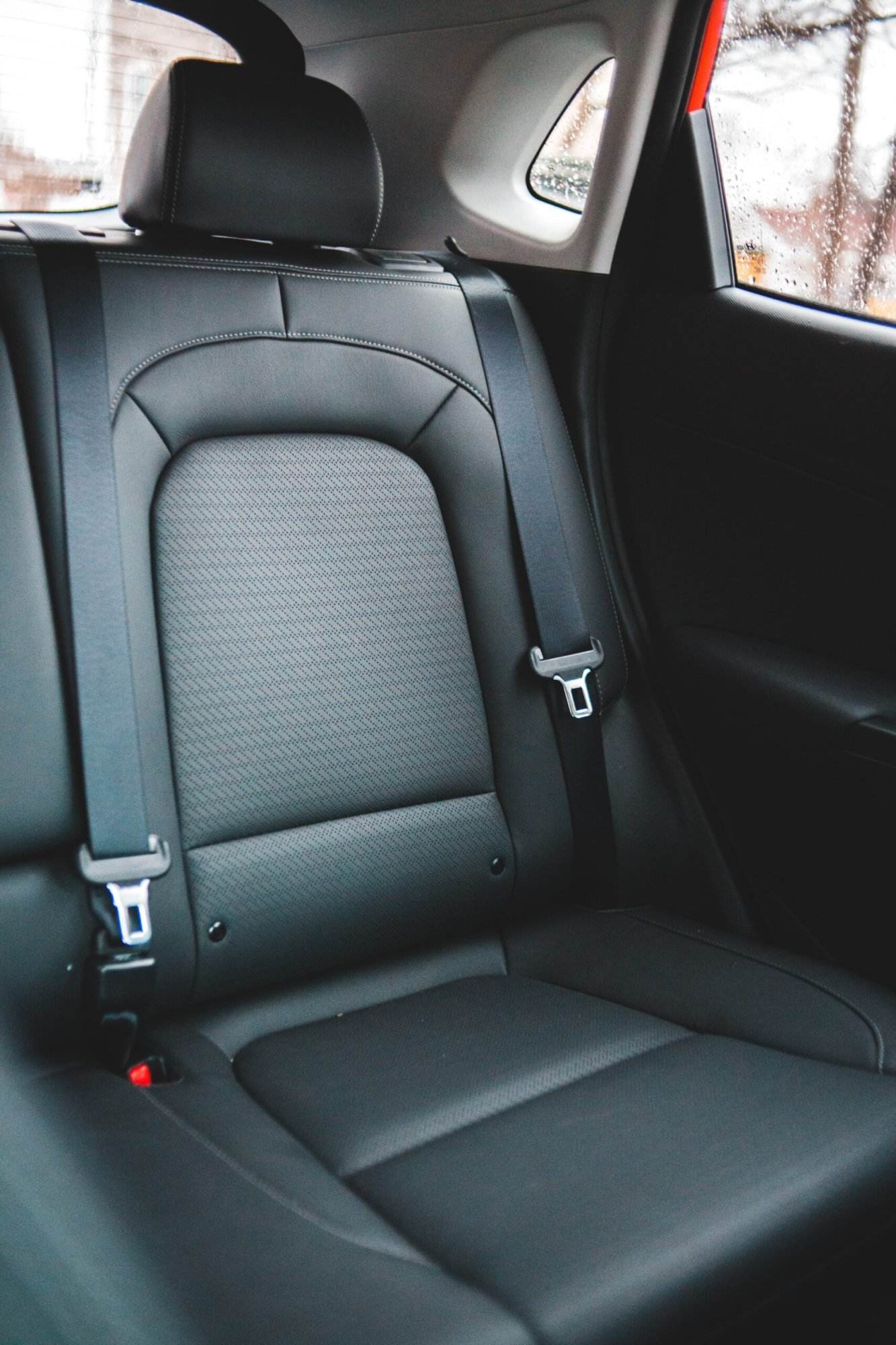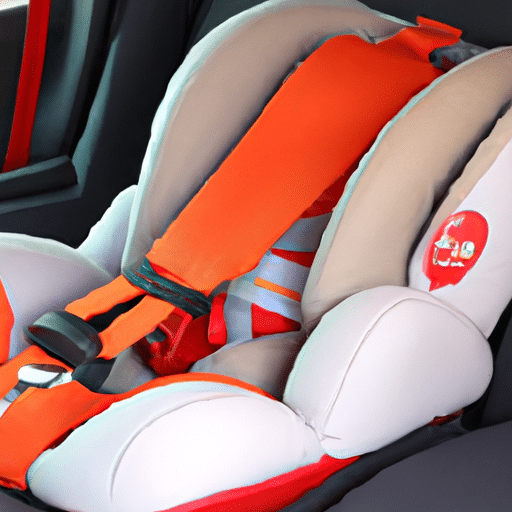If you’re a parent, you’ve probably wondered at some point, “When do babies grow out of a car seat?” As your little one continues to grow and reach new milestones, their safety while traveling becomes a top priority. In this article, we will explore the factors that determine when it’s time to upgrade from a car seat to a booster seat, ensuring your child’s safety on the road. From weight and height limits to regulations and recommendations, we’ll guide you through this important stage in your child’s development.

Age-Related Milestones
Newborn Stage
In the newborn stage, babies are typically between 0 to 3 months old. At this stage, they are unable to properly hold up their own heads and have limited control over their bodies. It is crucial to have a car seat that supports their fragile neck and provides adequate restraint. Rear-facing infant car seats are specifically designed for the newborn stage, providing a safe and secure environment for your little one during car rides.
Infant Stage
The infant stage typically spans from 3 to 12 months old. During this time, your baby will start gaining more head control and overall body strength. Rear-facing infant car seats are still the safest option for this stage, as they provide the necessary support and protection for their delicate bodies. These car seats are designed to accommodate the growth and changes that occur during infancy.
Toddler Stage
As your child enters the toddler stage, typically around 1 to 3 years old, their growth and development become more noticeable. They begin to gain more independence and develop an increased sense of curiosity. It is essential to transition to a forward-facing car seat, as it allows your child to comfortably sit facing the front while still providing the necessary safety measures. A forward-facing car seat offers additional features to ensure your child’s protection, such as an adjustable harness system and impact-absorbing materials.
Preschool Stage
The preschool stage typically encompasses children aged 3 to 5 years old. At this point, your child will have developed more advanced motor skills and coordination. While they may have outgrown their forward-facing car seat, it is important to still consider their height and weight when selecting the appropriate car seat. Transitioning to a booster seat with a backrest and shoulder belt guide can provide the necessary support and positioning for your child’s safety.
Height and Weight Considerations
Rear-Facing Car Seats
Rear-facing car seats are designed to accommodate babies and young children who are not yet able to sit up independently. The weight and height limits for rear-facing car seats vary by model, so it is important to closely follow the manufacturer’s guidelines. As a general rule, children should remain in a rear-facing car seat until they have reached the weight limit specified by the manufacturer or until their head is within one inch of the top of the car seat.
Forward-Facing Car Seats
Once your child has outgrown their rear-facing car seat, it is time to transition to a forward-facing car seat. These car seats are designed to be used when children have developed enough head and neck control to safely face forward. The weight and height limits for forward-facing car seats also vary by model, and it is crucial to follow the manufacturer’s guidelines. Generally, children should use a forward-facing car seat until they reach the maximum weight and height limits specified by the manufacturer.
Booster Seats
Booster seats are the next step in ensuring your child’s safety in the car. These seats are designed for children who have outgrown their forward-facing car seats but are not yet tall enough to use an adult seat belt properly. Booster seats elevate your child, allowing the seat belt to fit correctly across their body. The weight and height limits for booster seats vary, but they generally accommodate children up to 4 feet 9 inches tall and 80 pounds. It is important to adhere to the manufacturer’s guidelines when determining if your child is ready for a booster seat.
Seat Belt Use
Once your child has outgrown their booster seat, they may be ready to use a seat belt independently. However, it is crucial to ensure that the seat belt fits correctly and provides adequate protection. The lap belt should fit snugly across your child’s upper thighs, and the shoulder belt should cross their chest and shoulder without touching their face or neck. It is recommended to keep children in the back seat until they are at least 13 years old for optimal safety.
Car Seat Types and Requirements
Rear-Facing Infant Car Seats
Rear-facing infant car seats provide the necessary support and protection for newborns and young infants. They are specifically designed to cradle your baby’s head, neck, and spine while absorbing the impact of a potential crash. It is crucial to follow the weight and height limits specified by the manufacturer, as exceeding these limits can compromise the effectiveness of the car seat.
Convertible Car Seats
Convertible car seats are designed to adapt and grow with your child. They can be used in both the rear-facing and forward-facing positions, allowing for extended use. Convertible car seats often have higher weight and height limits compared to infant car seats, making them suitable for children who have outgrown the newborn and infant stages. They offer the flexibility to transition your child from rear-facing to forward-facing when they reach the appropriate milestones.
Combination Car Seats
Combination car seats combine the features of a forward-facing car seat and a booster seat. They can be used with an internal harness system in the forward-facing position and then transitioned to a booster seat by removing the harness. Combination car seats are suitable for older toddlers and preschoolers who have outgrown their forward-facing car seats but are not yet ready for a booster seat.
Booster Seats
Booster seats are designed to elevate your child, allowing the seat belt to fit properly across their body. They come in two types: high-back boosters with a backrest and backless boosters. High-back boosters provide additional head and neck support, making them ideal for children who still need that extra level of stability. Backless boosters are a more portable option, suitable for older children who have outgrown the need for a backrest.
Growth and Development Factors
Individual Growth Patterns
Every child develops at their own pace, which includes their growth patterns. It is essential to consider both the age and size of your child when determining if they have outgrown their current car seat. While there are general guidelines and recommendations, it is crucial to closely follow the manufacturer’s guidelines for your specific car seat model.
Bone Development
Bone development plays a significant role in determining when a child is ready to transition to a different car seat. As children grow, their bones become stronger, allowing them to have increased stability and support. It is important to transition to a car seat that aligns with your child’s bone development, providing optimal protection during car rides.
Muscle Strength
Muscle strength is another factor to consider when determining if your child has outgrown their car seat. As children develop stronger muscles, they gain better control over their bodies and are better equipped to handle different seating positions. Transitioning to a car seat that offers different levels of support can help ensure your child’s comfort and safety.
Head Control
Head control is an important milestone in a child’s development and is crucial when considering car seat transitions. Rear-facing car seats provide the necessary support and protection for infants who have not yet developed full head control. As your child gains more control over their head and neck, transition to a forward-facing car seat can be considered, providing additional benefits and features to support their development.
Leg Room
Leg room is often a concern for parents when determining if their child has outgrown their car seat. While it is natural for toddlers and preschoolers to have their legs bent in a more flexed position, it is crucial to ensure that their knees do not extend past the edge of the car seat when rear-facing. When forward-facing, their legs should comfortably rest on the seat without feeling cramped or restricted.

Legal Requirements and Recommendations
National and State Laws
In the United States, car seat laws and regulations vary from state to state. It is essential to familiarize yourself with the requirements of your specific state to ensure compliance. These laws typically specify the age, weight, and height requirements for each type of car seat. In some states, rear-facing car seat use is mandated until a certain age or weight, while others require booster seat use until a specific height. Familiarizing yourself with these legal requirements is essential for ensuring your child’s safety and avoiding any potential penalties.
American Academy of Pediatrics (AAP)
The American Academy of Pediatrics (AAP) provides guidelines and recommendations regarding car seat usage for children of different ages and sizes. These guidelines prioritize safety and are intended to serve as a standard for parents and caregivers. The AAP specifically recommends rear-facing car seat use until at least the age of 2 or until the child reaches the maximum weight and height limits specified by the manufacturer. Following the AAP guidelines can help ensure that your child remains safe and protected during car rides.
Manufacturer Guidelines
In addition to legal requirements and recommendations, it is crucial to follow the guidelines provided by the car seat manufacturer. Each car seat model is designed with specific weight and height limits in mind, and exceeding these limits can compromise the effectiveness of the car seat. The manufacturer guidelines often provide detailed information on installation, proper usage, and when to transition to a different car seat. By closely following these guidelines, you can ensure that your child’s car seat provides optimal protection.
Signs of Outgrowing a Car Seat
Exceeding Size and Weight Limits
One of the most obvious signs that your child is outgrowing their car seat is exceeding the size and weight limits specified by the manufacturer. It is crucial to carefully monitor your child’s growth and double-check the limitations of their car seat model. If your child’s weight or height is beyond the recommended range, it is time to consider transitioning to a different car seat.
Head Protrusion over the Seat
When your child’s head starts protruding over the top of the car seat, it is a clear indicator that they may have outgrown their current car seat. This can compromise their protection during a car accident or sudden stop. As your child grows, it is essential to ensure that their head remains within the confines of the car seat for optimal safety.
Shoulder Height Above Harness Slots
The position of your child’s shoulders in relation to the harness slots is another indicator of outgrowing a car seat. The harness straps should be positioned at or just below your child’s shoulders for proper restraint and protection. If your child’s shoulders exceed the highest harness slot, it is a sign that they need to transition to a different car seat that can accommodate their increased height and shoulder position.

Transitioning to a Different Car Seat
Moving to a Convertible Car Seat
When your child outgrows their rear-facing infant car seat, it is time to consider transitioning to a convertible car seat. Convertible car seats offer versatility, as they can be used in both the rear-facing and forward-facing positions. When transitioning to a convertible car seat, follow the manufacturer’s guidelines to ensure proper installation and usage.
Switching to a Booster Seat
Once your child has outgrown their forward-facing car seat, the next step is transitioning to a booster seat. Booster seats elevate your child, allowing the seat belt to fit properly across their body. Follow the manufacturer’s guidelines to ensure your child’s safety and proper positioning in the booster seat.
Using a Seat Belt Only
When your child has outgrown their booster seat and no longer needs additional support, they can transition to using a seat belt only. It is crucial to ensure that the seat belt fits correctly across their body, with the lap belt snugly positioned across their upper thighs and the shoulder belt crossing their chest and shoulder without touching their face or neck.
Professional Advice and Consultation
Pediatrician Recommendations
Consulting with your child’s pediatrician can provide valuable guidance and recommendations when it comes to car seat transitions. Pediatricians are familiar with your child’s growth and development and can offer insights specific to your child’s individual needs. They can provide advice based on their medical knowledge and help you determine when it is appropriate to transition to a different car seat.
Certified Car Seat Technicians
Certified car seat technicians are trained professionals who specialize in car seat safety. They have extensive knowledge of different car seat models, installation techniques, and usage guidelines. Consulting with a certified car seat technician can ensure that the car seat is installed correctly and used properly, providing optimal protection for your child. They can also offer personalized advice based on your child’s unique needs.

Frequently Asked Questions
Should I consider the child’s age or weight more?
Both age and weight are important factors to consider when determining if your child has outgrown their car seat. It is crucial to closely follow the manufacturer’s guidelines that specify weight and height limitations for each car seat model. While age can provide a general guideline, it is essential to ensure that your child’s weight is within the recommended range to guarantee their safety.
What if my child is tall but lightweight?
If your child is tall but lightweight, it is important to prioritize weight when determining if they have outgrown their car seat. Height alone is not an accurate indicator of whether a child is ready for a different car seat. Ensure that their weight falls within the manufacturer’s recommended range to ensure optimal protection.
Can a child use an adult seat belt without a booster?
Children should not use an adult seat belt without a booster until they meet the height and weight requirements specified by the manufacturer. Adult seat belts are designed for adults and may not properly protect children who are not yet tall enough or heavy enough to use the seat belt alone. Booster seats elevate children, ensuring that the seat belt fits correctly across their body.
When can my child stop using a car seat altogether?
It is important to follow the legal requirements and recommendations of your specific state, the AAP, and the car seat manufacturer regarding when your child can stop using a car seat altogether. In general, children should use a car seat until they are at least 4 feet 9 inches tall and 80 pounds. However, it is recommended to keep children in the back seat until they are at least 13 years old for optimal safety.
Conclusion
Selecting the appropriate car seat for your child is essential for their safety and protection during car rides. Understanding the different age-related milestones, height and weight considerations, car seat types and requirements, growth and development factors, legal requirements and recommendations, signs of outgrowing a car seat, transitioning to a different car seat, seeking professional advice, and frequently asked questions can help ensure that your child remains safe at every stage of their journey. Remember to closely follow the manufacturer’s guidelines, consult with medical professionals, and prioritize the safety of your child above all else.





